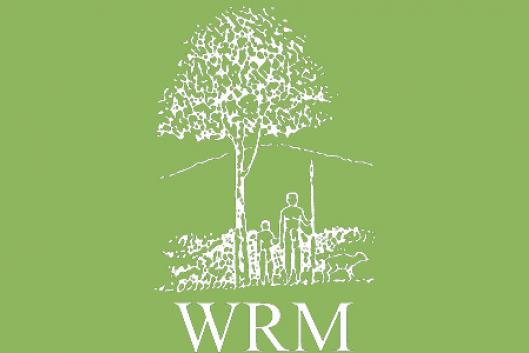As soon as the year started, a tragedy sparked off in Orissa's Jajpur district in Kalinga Nagar.
For many months, local tribals and other villagers have engaged in a bitter struggle to avoid displacement by the steel project of Tata Industries, a company with a long history of displacing people and exploiting their natural resources. An earlier attempt to start construction in Kalinga Nagar was prevented by local people in May last year.
On January 2, local people gathered at the building site of the proposed steel plant of Tata Steel. When the bulldozers roared into action, the men and women, armed with traditional weapons, closed in on the site. However, there were strict instructions from the State Secretariat to facilitate the construction. Rubber bullets were fired and teargas shells were lobbed at the agitating crowd, to no avail. Twelve adivasis were silenced to death.
As the government tried hard to defuse the crisis, the people continued the roadblock keeping the 12 bodies on the highway. They cremated the bodies late in the afternoon after some social activists persuaded them to do so. The deaths united the tribal people and they vowed at the funeral ground that they would not part with an inch of their ancestral land for any industry.
The government had decided to handover thousands of acres of the Adivasis land for the construction of mines, industry and similar mega projects. If this plan is realised then over 55,000 of the Adivasi people in Jharkhand alone will be displaced. In response to this threat, in the past six months those villages have formed Bhumi Suraksha Sangatans (Organisations for the Protection of Our Lands) that have to date successfully organized “Janata Curfews” preventing any Government or mining company personnel from entering their villages. A new resistance movement was born.
In a letter sent last year by Chakradhara Haibru, President of the Visthapan Virodhi Manch --the organization which leads the resistance to displacement-- to the Orissa State Pollution Control Board, it becames clear the position of the local people: “The core zone [of the Tata Steel plant] is not waste land. [It] consists of green hills with rich forests, tribal settlements of more than ten thousand people spread over two gram panchayats, agricultural lands, ancient tanks, grazing fields, village common lands and roads”. “Twenty per cent of the Project area has quality forest where timber species like Sal, Kuruma, Vandan, Ashan and Piasal, besides Mahula, Kendu are plentily available in these parts.” “The total area of waste land is less than 5 acres on the Northern side. Why the core zone is described as WASTE LAND ignoring the ground reality?” “It will pain us if an impression is created that the tribals in Kalinga Nagar got killed because they demanded more compensation or better rehabilitation package. The issue is quite different from what is presented in media."
Learning from bitter experience, the letter went on saying: “The report [of the State Pollution control Board] tries to impress that, by the coming up TSL (Tata Steel) project, direct and indirect employment would be generated and the impact will be beneficial to human environment. We belief, the report tries to point out that, the people in the buffer zone shall lead a developed and prosperous life – with better food, better health, better housing conditions, education and cultural facilities. This is a false picture for the vast majority of the working people on the area.
The 'Secretive' expansion plan of Kalinga Nagar by the Govt. of Orissa, moving to acquire nearly 200Sq. Km. for the industrial complex, infrastructure and other purposes shall make all the peasants in this zone landless. Most of them will be turned homeless and shall seek shelter in Government colonies. There will be acute shortage of water, widespread air pollution by the effect of industrial complex. In the meanwhile prime agricultural lands are being purchased by some private companies through illegal deals making the peasants landless. The Government officials are conniving with the land dealers for the acquisition of land from poor peasants.
Most of the tribals who face displacements are without lawful rights on their homestead land and agricultural land. So the compensation package of 10 decimal plot in rehabilitation colony with 50,000 Rupees to construct one room “pucca” house does not make them secure even for a day. Because they don't have regular work to make their earnings. Cut off from their traditional life, traditional occupation of agriculture and food gathering, these people cannot by any stretch of imagination be capable to earn enough in the colony to wait for a job in the plants. After all, they are not eligible to get preferential treatment in the job market of Kalinga Nagar. They are not land losers per Government criteria. We have our lessons from the plight of the displaced people living in Gobarghati rehabilitation colony, who earn their living, men women and children, in crusher plants. They weep for their present misfortune and curse the Nilachal Plant Authorities for whom they lost their home and lands.
We the tribals 10,000 in number and the 50,000 other tribals in the buffer zone are against the displacement from our homes and agricultural lands. So also the 50,000 Dalit people are against the projects in Kalinga Nagar. In this connection we don't agree to and accept the 'development' dream put before us by the report. We are not prepared to be homeless, landless, jobless. We don't want to lose our traditional culture life.”
Article based on information from: “We don't accept the 'development dream' put before us!”, Chakradhara Haibru, Bistapan Virodhi Janamancha, http://www.minesandcommunities.org/Action/press864.htm; “People's Version Of Kalinganagar Firing On 2nd January, 2006, Independent Media, http://samajwadi.blogspot.com/
